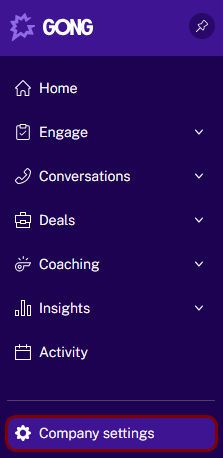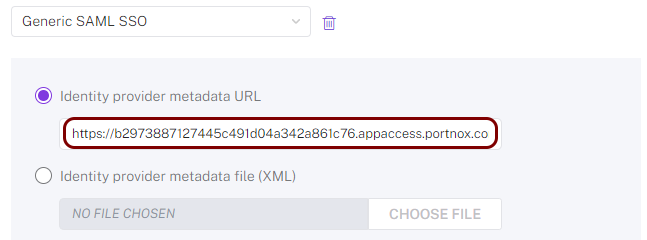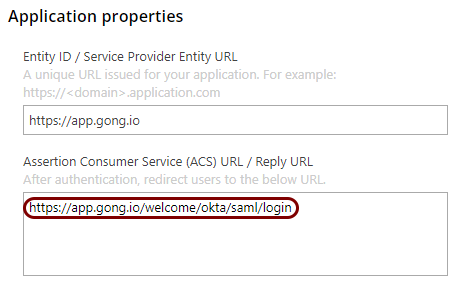Integrate Gong with Conditional Access
In this topic, you will find general instructions on how to integrate Gong with Portnox™ Conditional Access for Applications.
Create a Portnox Cloud application configuration
In this step, you will create a configuration in Portnox Cloud that will contain all the information necessary to integrate with Gong.
-
In a new tab of your browser, open your Portnox Cloud account by accessing the following URL: https://clear.portnox.com/
From now on, we will call this tab the Portnox tab.
-
In the Cloud portal top menu, click on the Applications option.

-
On the Applications screen, click on the Add application button, and
select the Add new SAML application option.

- Optional: If you have more than one SAML identity provider configured, select the identity provider in the Select an identity provider to use for this application section.
-
In the Application details section, enter an Application
name and optionally a Description.

In this example, we used the name Gong for the new application configuration but you can use any name you like.
- Keep this browser tab open. You will need it later.
Open your Gong generic SAML SSO settings
In this section, you will access your Gong company settings and find the generic SAML SSO settings.
-
In another tab of your browser, open Gong by accessing the following URL: https://app.gong.io/ and logging in.
From now on, we will call this tab the Gong tab.
-
In the left-hand side menu, on the very bottom, click on the Company settings option.

-
In the Company settings pane, in the Company section, click on the
Authentication option.

-
In the Authentication pane, in the Additional authentication providers
field, select the Generic SAML SSO option.

Copy configuration values from the Portnox tab to the Gong tab
In this section, you will copy the values displayed by Portnox Cloud and paste them in the relevant fields in the Gong generic SAML SSO setup section.
-
In the Portnox tab, in the SAML metadata section, click on the ⧉ icon next to the text field to copy the value.
 Note: You can also click on the Download metadata XML file link, download the XML file locally, and then upload it to Gong in the next step.
Note: You can also click on the Download metadata XML file link, download the XML file locally, and then upload it to Gong in the next step. -
In the Gong tab, click on the Identity provider metadata URL option, and in the field below,
paste the metadata URL copied from Portnox Cloud.

Enter configuration values in the Portnox tab
In this section, you will enter configuration values in the relevant fields in Portnox Cloud.
-
In the Portnox tab, in the Application properties section, click on the empty field under
the Entity ID / Service Provider Entity URL heading and enter the following value:
https://app.gong.io.

-
In the Portnox tab, in the Application properties section, click on the empty field under
the Assertion Consumer Service (ACS) URL / Reply URL heading and enter the following value:
https://app.gong.io/welcome/okta/saml/login.

Finalize the configuration
In this section, you will finalize the configuration in Portnox Cloud and Gong.
-
Finalize the configuration in the Portnox tab.
-
Finalize the configuration in the Gong tab.
Result: You have configured Gong to be accessible using Portnox Conditional Access for Applications.



